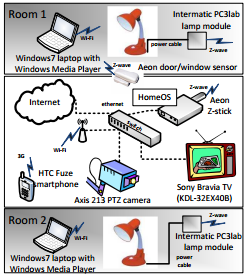Microsoft, R2 Studios: The home-automation connection

The Wall street Journal reported on January 2 that Microsoft quietly bought id8 Group R2 Studios to boost its Xbox business.

A few subsequent reports -- none of which still has been confirmed officially by Microsoft, for what it's worth -- noted that the startup, which is the brainchild of the creator of the Slingbox, has been working on mobile apps that tap into home-automation systems. Given Microsoft's mission to morph the Xbox from just a gaming console to the center of users' living rooms, the Xbox-home-automation tie-in makes sense.
The addition of Kinect, Microsoft's gesture/voice-controllable sensor for Windows and Xbox, makes the home-automation possibilities even more interesting. More than a few individuals have created Kinect hacks to control their lights, open garages and more.
Xbox isn't the only part of Microsoft that has home-automation leanings. For years, Microsoft has been licensing embedded versions of its Windows operating system. The company has been working to improve the management of "the Internet of things" even before the company moved its embedded team into its Server and Tools business (which is home to Microsoft's systems-management products and technologies).
At the same time, Microsoft Research has been working on a project called "HomeOS" since at least 2010. Rather than controlling heating, air-conditioning and other home systems, HomeOS seems to be more about simplifying the connections and management of the many electronic gadgets and systems typically found in homes.
A white paper describing the project never said that HomeOS is derived from or based on Windows. (There are other operating system research projects and incubations at Microsoft, including Singularity and Midori, neither of which is Windows-based, so it's not a given that HomeOS is Windows-centric.) But HomeOS was built using C# and the .Net Framework 4.0, according to the white paper.
Microsoft Research currently is licensing (free; non-commercial use) the HomeOS prototype to academic instituitions "to encourage teaching and research on connected homes and devices," the HomeOS page on Microsoft's Web site says. Microsoft researchers also have tested HomeOS in more than a dozen homes.
(There's another related Microsoft Research effort, known as PreHeat, which is all about controlling home-heating systems, based on occupancy information.)
As the Wall Street Journal report noted, patents also are a big part of why Microsoft, Google, Apple and other rumored R2 suitors were interested in the startup in the first place. With SmartGlass and other technologies, Microsoft has been striving to make connectivity between the TV, phones, tablets and PCs seamless.